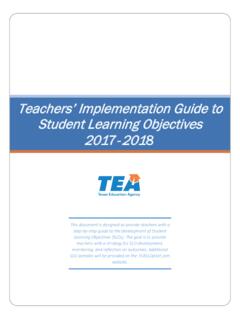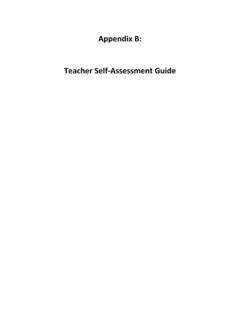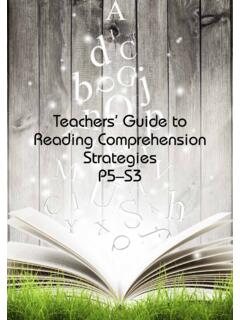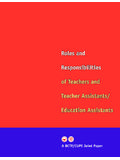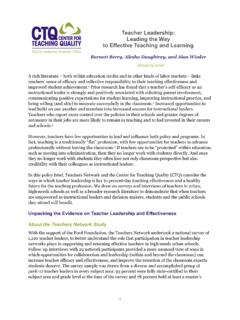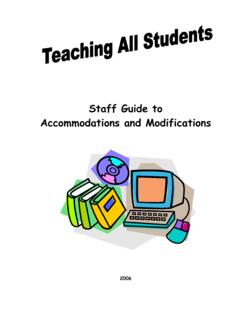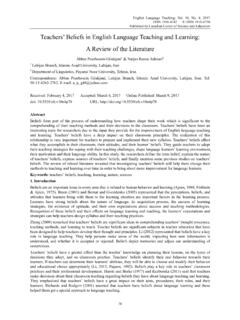Transcription of Student Learning Objectives Implementation Guide for …
1 This document contains both information and form fields. To read information, use the Down Arrow from a form field. Student Learning Objectives Implementation Guide for Teachers SLO teacher Guide TE A 7/30/2021 Table of Contents 1 Table of Contents Using This SLO Handbook .. 2 The Texas Student Learning Objective 4 Question 1: What is the focus for my SLO? .. 5 Question 2: Who are my students?.. 10 Question 3: What are my expectations for these students? .. 15 Question 4: How will I Guide these students toward growth? .. 21 Phase 2: Monitor Progress to Drive Instruction.
2 24 Question 5: Are my students progressing toward targets? .. 24 Phase 3: Evaluate Success and Reflect .. 27 Question 6: Did students grow, and what did I learn from the process?.. 27 Final Thoughts: Student Learning Objectives .. 30 Appendix A: SLO Form .. 31 Appendix B: Student Growth Tracker .. 35 Appendix C: Rating Rubric .. 36 Appendix D: Success 38 Appendix E: Progress Discussion Notes (Optional) .. 39 Appendix F: End-of-Year Reflection .. 40 Appendix G: Definitions for the SLO 41 SLO teacher Guide TE A 7/30/2021 Using This SLO Handbook 2 Using This SLO Handbook The purpose of this Implementation Guide is to provide step-by-step information about crafting, implementing, and reflecting on SLOs.
3 This guidance is not designed as a stand-alone resource for SLO Implementation but should accompany training on the SLO process and support throughout the year. Teachers will be able to find support on a particular step by locating the general question in the table of contents and jumping to that section of the Guide . Vision Statement The Student Learning Objective (SLO) Model in Texas provides a framework for continual dialogue among students, teachers, and principals to support Student growth and teacher development throughout the year. Guiding Principles Support Local Autonomy: Provide flexibility for districts, campuses, and classrooms toadapt as needed.
4 Support and measure Student Growth Support teacher Development: Provide a meaningful framework for measuring Student growth and supporting teacherdevelopmentDesign Attributes Instructionally Valuable: Support educators to make responsive instructionaldecisions throughout the year. Standards-Aligned: Address academic standards that are critical to Student Learning . Equitable: Meet the unique needs of all students and teachers. Transparent: Be clear, concise, and easily understood. Manageable: Be easily incorporated into and enhance existing methods formeasuring Student Are Student Learning Objectives ?
5 Excellent teachers regularly set Learning goals for their students and use a variety of data sources to monitor progress towards these goals throughout the year. The Student Learning Objectives process aims to capture this best practice as a means to allowing teachers and teacher appraisers to determine Student growth and reflect on a teacher s pedagogical strengths and areas for growth. Student Learning Objectives are: Student growth goals Set by teachers Focused on a foundational Student skill that is developed throughout the curriculum Tailored to the context of individual students Designed to help teachers better understand the impact of their pedagogy For the purposes of measuring Student growth and refining a teacher s instructionWhy Use Student Learning Objectives (SLOs) as a Measure of Student Growth?
6 SLOs drive both teacher practice and Student Learning by strengthening instruction. The use of SLOs has been associated with improved Student outcomes on standardized assessments. Teachers crafting SLOs report improved understanding of how to use data to determine Student needs and to measure progress toward growth goals. SLOs encourage collaboration among teachers as well as between teachers and their appraisers. SLOs encourage the adoption of a long-term vision for Student Learning and contribute to more meaningful discussions about vertical planning. Finally, SLOs provide a framework for measuring Student growth grounded in Student work as the source of evidence SLO teacher Guide TE A 7/30/2021 Using This SLO Handbook 3 The Texas Student Learning Objective Process Process Overview and Planning Considerations The Student Learning Objective process should be used throughout the school year to help teachers plan backward from an end vision for Student success.
7 This process helps encourage regular conversations and collaboration among teachers, students, and appraisers in order to ensure that instruction facilitates students progress toward targeted growth goals. The SLO process represents a continuous cycle of improvement embodied in strong teaching practice. Teachers and their appraisers will use SLOs to design strategies to meet their goals for Student success, beginning with planning and leading to thoughtful instructional design and delivery. Throughout the year, teachers will collect a BOE (body of evidence) of Student Learning and adjust instruction accordingly.
8 At the end of the cycle, teachers will reflect on outcomes and plan to refine their practice for the following year. For ease of understanding, the SLO process has been grouped into three key phases to define the sequence of actions to be taken. Phase 1: Creating a Student Learning Objective The first phase focuses on purposeful planning of instruction and setting Student growth goals. At the beginning of the course, teachers work with each other, their appraisers, and other support staff to identify the foundational skill they ll address in their SLO, identify Student starting points on the foundational skill, and develop clear targets for Student growth.
9 Phase 2: Monitoring Progress to Drive Instruction After the SLO Form is completed and approved by the appraiser, teachers will work with each other and their appraiser, engaging in ongoing dialogue about progress toward goals. In this phase, teachers work with each other and their appraiser, to discuss students progress toward goals. These discussions are opportunities for teachers to develop strategies to adjust instruction based on analysis of Student Learning . Teachers design assignments/projects/assessments that will constitute the body of evidence of Student work.
10 Phase 3: Evaluating Success and Reflection This last phase occurs at the end of the course and involves using the body of evidence of Student work to determine whether students met their growth goals. It also includes a conversation between the teacher and appraiser regarding the effectiveness of the teacher s engagement in the SLO process, and results in an overall rating that is based on both teacher and Student outcomes. The final conversation helps teachers and appraisers plan for instructional refinement. SLO teacher Guide TE A 7/30/2021 The Texas Student Learning Objective Process 4 SLO teacher Guide TE A 7/30/2021 Step 1: What is the focus for my SLO?
